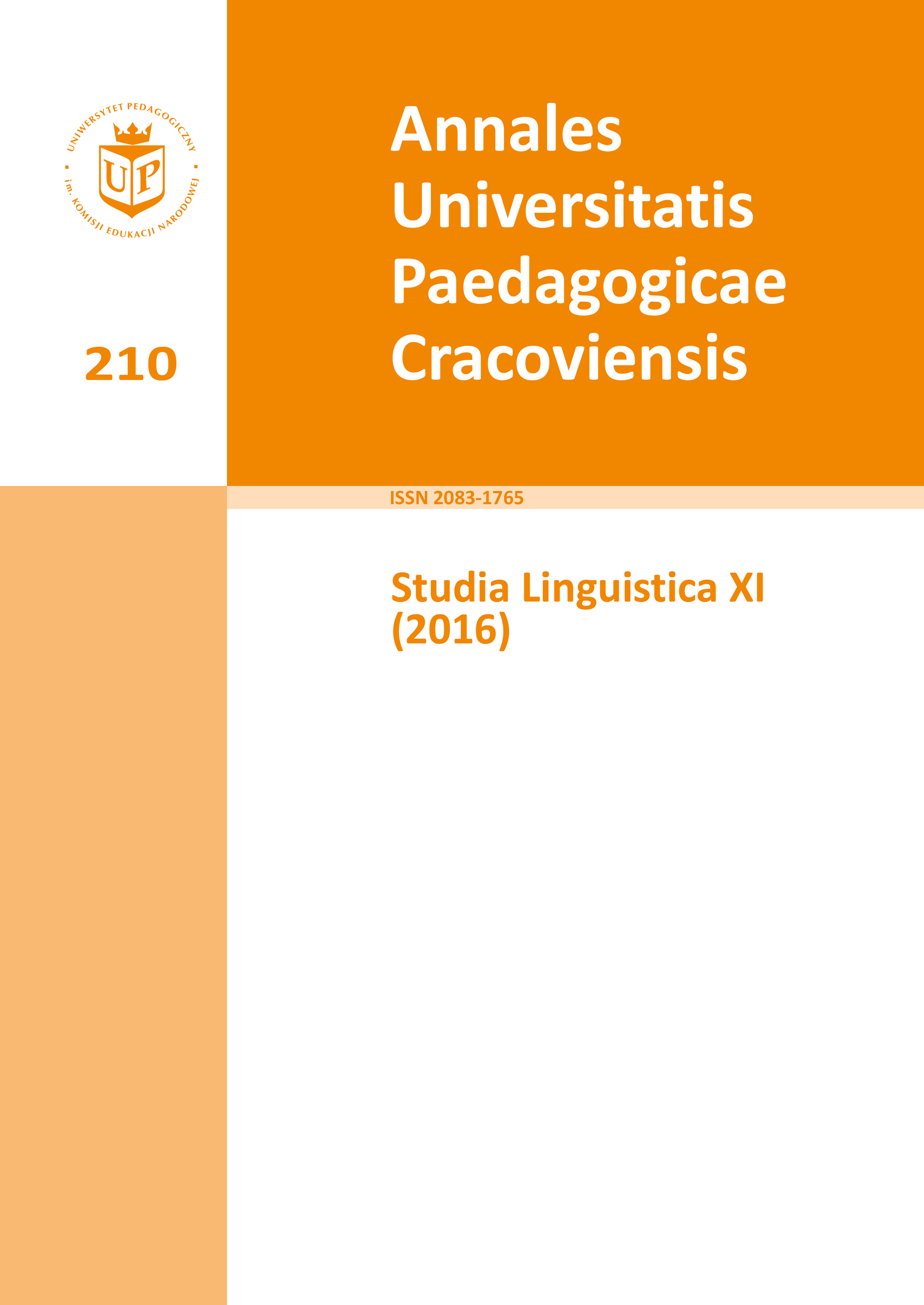Staro- i średniopolskie nazwy ciast
Main Article Content
Abstract
n the article herein the thirty-four lexical units were undertaken and analysed thorough- ly which maintained the old- and middle-Polish appellations of baking products - pastries. Stemming from the etymology, the motivation was investigated, the meaning and the semantic changes in the gathered texts of words were also scrutinized and put under the magnifying glass. It was evidenced that the nomination of investigated names of ‘baked cakes’ consisted of six general functions such as: 1. literal character of particular cake; 2. indication of its main baking ingredients; 3. the form of it; 4. origin of a cake; 5. increase of ‘favourable of a cake’ by a referral to the authority; 6. correlation of the particular cake with its rites and holidays (during which the pastries were served) (sic!). Most frequently the old names of ‘baked good- ies’ were made as simple associations and were coupled with particular shape of the bake.
Downloads
Article Details
Author, submitting a text to the editorial board of the journal “Annales Universitatis Paedagogicae Cracoviensis. Studia Linguistica", certifies that the content of the article has not been published so far and that the work does not violate in any way the copyright or related rights of other person, as well as other rights of third parties, and that no one's rights to the work (or any part thereof) have been missed. After signing the contract, the property rights to the published materials are transferred to the Scientific Publisher of the University of the National Education Commission, Krakow.
“Annales Universitatis Paedagogicae Cracoviensis. Studia Linguistica” is an open access journal, and all its content is made available free of charge to users and institutions under the Creative Commons CC-BY-NC-ND 4.0 license (attribution, non-commercial use, no derivative works). Under this license, the authors agree that their work may be lawfully reused for any purpose, except for commercial purposes, without the prior consent of the author or publisher. Everyone can read, download, copy, print, distribute and process these works, provided that the author's marking and the original publication place are correct. Published texts may not be used to create derivative works (e.g. to translate and publish in another language without the consent of the publisher). This is in line with the BOAI (Budapest Open Access Initiative) definition. "Studia Linguistica" does not charge for submitting or processing articles.
References
Besala J., 2015, Alkoholowe dzieje Polski. Czasy Piastów i Rzeczypospolitej szlacheckiej, Poznań.
Google Scholar
Bochnakowa A., 1984, Terminy kulinarne romańskiego pochodzenia w języku polskim do końca XVIII wieku, Kraków.
Google Scholar
Bockenheim K., 1998, Przy polskim stole, Wrocław.
Google Scholar
Dąbrowska A., 1998, O językowym zachowaniu przy stole. Dlaczego upiększamy nazwy potraw, [w:] Oczywisty urok biesiadowania, red. P. Kowalski, Wrocław, s. 248–257.
Google Scholar
Dembińska M., 1963, Konsumpcja żywności w Polsce średniowiecznej, Wrocław – Warszawa – Kraków.
Google Scholar
Gloger Z., 1974, Encyklopedia staropolska ilustrowana, t. 1, Warszawa.
Google Scholar
Jurafsky D., 2012, The Language of Food. A Linguist Reads the Menu, New York – London.
Google Scholar
Kitowicz J., 2005, Opis obyczajów za panowania Augusta III Sasa, Gdańsk, s. 267.
Google Scholar
Kreja B., 1958, Propozycje etymologiczne: 1. Wymsknąć się; 2. Naleśnik, „Język Polski”, t. 38, s. 204–206
Google Scholar
Krótki Z., (w druku), Chleb w leksyce staro- i średniopolskiej, „Studia Słowianoznawcze”.
Google Scholar
Kukorowski S., 1998, Od ascezy do obżarstwa. O jadłospisie mnichów, [w:] Oczywisty urok bie- siadowania, red. P. Kowalski, Wrocław, s. 51–61.
Google Scholar
Lemnis M., Vitry H., 1979, W staropolskiej kuchni i przy polskim stole, Warszawa.
Google Scholar
Markowski A., 1994, Kuchnia w języku czyli o nazwach produktów kulinarnych, [w:] Wokół stołu i kuchni, red. M. i J. Łozińscy, Warszawa, s. 129–141.
Google Scholar
Nowakowska A., 1994, Polszczyzna imbirem pachnąca. Związki frazeologiczne z nazwami przypraw korzennych, „Poradnik Językowy”, t. 10, s. 1–10.
Google Scholar
Ogrodowska B., 2004, Polskie obrzędy i zwyczaje doroczne, Warszawa.
Google Scholar
R.S., 1993, Karnawałowe bale i racuchy, „Poradnik Językowy”, t. 9–10, s. 571–574.
Google Scholar
Siekierska K., 1993, Co jadano w Polsce w czasach saskich. (Uwagi o terminologii kulinarnej w Słowniku Troca i w niektórych pamiętnikach XVIII wieku), [w:] Polszczyzna Mazowsza i Podlasia. Różnice w mowie pokoleń, red. B. Bartnicka et al., Łomża – Warszawa, s. 125–135.
Google Scholar
